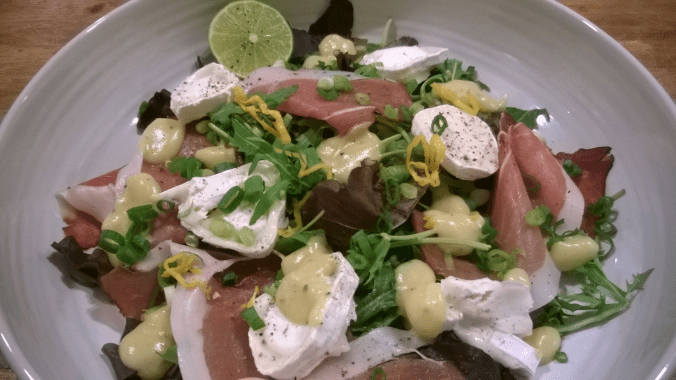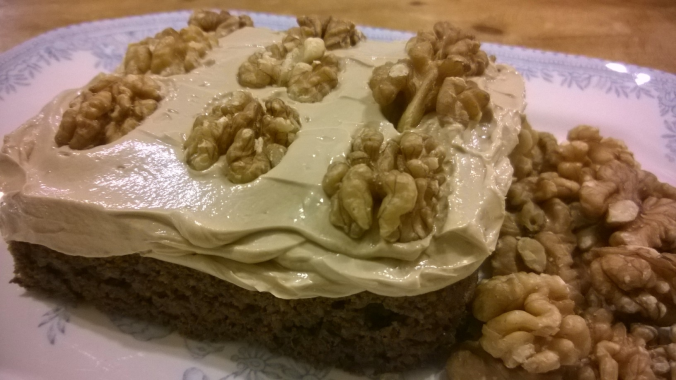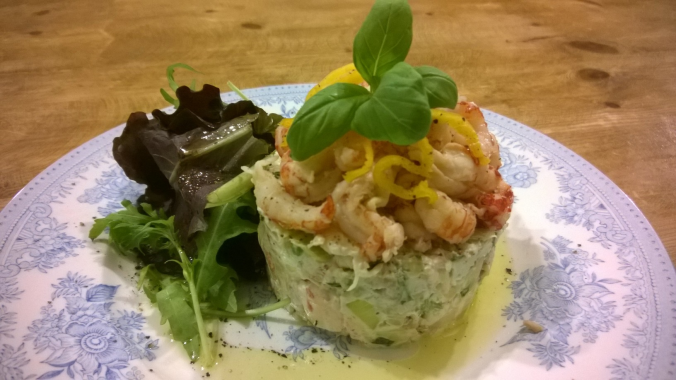This was the nicest meal I’ve had in a long time. I can’t therefore praise it enough! There’s something about stroganov that innately speaks ‘comfort-food’. It’s creamy, rich and filling; but has just the right amount of kick due to the heat of paprika. This makes it the perfect thing for a chilly winter’s evening.
Lamb is also a firm favourite. If you’re going to pair meat with something like stroganov; the meat needs sufficient flavour to hold its own against the sauce. Beef or lamb is therefore ideal, whereas something like chicken would risk getting lost. The cut I chose was lamb leg-steaks. These are quick to cook and remain tender, despite their relatively short time in the pan.
Once you’ve tried this, you’ll understand why I like it. The whole thing is ready in 30-40 minutes, and it doesn’t require ‘standing over’ or mothering whilst it cooks. Beyond all else however, it is supremely delicious. Due to the very low carb-content, this recipe is suitable for diabetics and gluten-intolerants. If you’re on a paleo-diet it is also ideal. In fact, I recommend it to everybody!
Start by making your stroganov. Finely slice a large onion and soften this in a sauté-pan with a little butter and oil. Adding oil to the butter stops the latter from burning. Burnt butter is not only careless, it’s also shameful and a wasteful tragedy! There; you’ve been told – don’t let it burn!
Roughly chop peppers and courgette and add these to the pan, followed by whole mushrooms. If these are on the large side, simply cut them down the middle. This dish requires chunks however, so not too small. Crush in two cloves of garlic, add a chopped chilli and sprinkle on two teaspoons of paprika.
Leave to cook for a minute or so, then deglaze the pan. I like to do this first with a small quantity of vodka, then follow it by a little dry vermouth for sweetness. An inquisitive nose held over the pan will be rewarded with a powerful waft of fragrantly alcoholic steam. A cook must get their perks somehow…!
Once the liquid has reduced, pour on a cupful of water and crumble in a chicken stock cube. Simmer for 20 minutes, then swirl in generous glug of cream. Taste the sauce to check for seasoning and adjust if required.
Meanwhile place a griddle-pan or thick-bottomed skillet on the hob. Once this is really hot, season your lamb steaks and coat with a small quantity of oil. Then lower these into the pan, enjoying the playful sizzle as they hit the dry metal. Few things can be more mouth-watering than the scent of seared lamb. Be sure to enjoy it for the full six minutes; three minutes on each side to retain an element of the medium rare!
Spoon your stroganov onto a heated serving-dish, then lift your lamb out of the skillet and place next to your vegetables. Garnish the finished dish with a a sprinkle of chopped basil or parsley then rush to the table whilst the lamb is still sizzling.
There’s only one word for this… Divinely delicious! Okay, so that was two, but one didn’t quite seem to do it justice!
However many words you end up using, be sure to give this a go and let me know the results.
Thanks for reading and bon ap!
Adam.






















